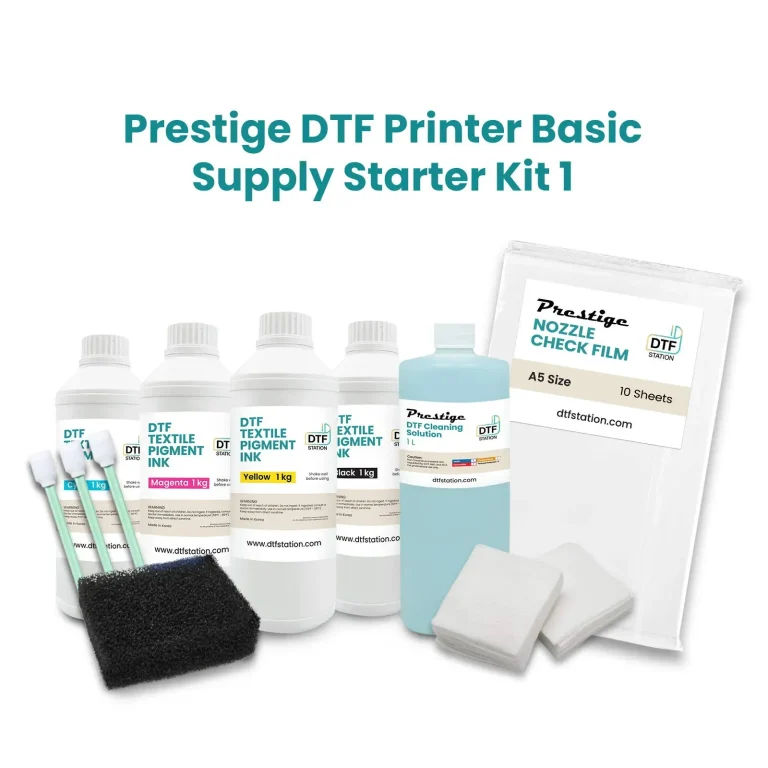DTF Supplies: Maximize Your Printing Quality Today
In the dynamic realm of garment decoration, **DTF Supplies** are essential for harnessing the incredible potential of Direct to Film (DTF) printing technology. This innovative method allows for the transfer of striking, high-definition designs onto fabrics with outstanding durability and vibrancy. To optimize your printing results, it’s critical to understand the relationship between DTF inks, printer settings, and adhesive powders. With the right DTF supplies at your disposal, you can ensure crisp prints that stand the test of time, captivating attention and enhancing your product offerings. In this guide, we will delve into the core components that contribute to achieving professional-quality prints, empowering you to elevate your DTF printing endeavors.
When it comes to textile printing, Direct to Film (DTF) technology is at the forefront, providing a revolutionary way to achieve vibrant, long-lasting designs. This advanced printing solution utilizes specialized films and inks to transfer stunning visuals onto various fabric types, ensuring that your creations look their best. By employing top-notch materials, understanding critical printer configurations, and utilizing the right adhesive powders, you can significantly enhance your print quality. In this article, we will uncover the essentials of DTF supplies, focusing on how these components work in harmony to produce eye-catching results. Whether you’re a seasoned professional or a budding entrepreneur, mastering these elements will pave the way for successful and impactful print projects.
Understanding the Essentials of DTF Printing
DTF printing, or Direct to Film printing, has become a favored method among professional printers for its ability to produce high-quality, long-lasting designs. The process starts with printing the desired design on a special film that is then coated with a specific adhesive powder, making it possible to transfer the ink effectively onto various fabrics. This approach not only ensures vibrant colors but also contributes to the overall durability of the prints, setting it apart from traditional methods.
Using the best DTF supplies is paramount to achieving optimal results. The quality of DTF inks, for instance, significantly alters the final product. Water-based DTF inks are recommended for their excellent adhesion properties and capacity to preserve the vibrancy of colors over time. In addition to inks, the film quality should not be overlooked, as high-grade PET films are necessary for ensuring a smooth transfer and adherence without compromising on the image clarity.
Frequently Asked Questions
What are the essential DTF supplies needed for high-quality Direct to Film printing?
To achieve high-quality Direct to Film (DTF) printing, essential supplies include high-quality PET film, water-based DTF inks, DTF adhesive powder, and a reliable DTF printer. Each component contributes to overall print quality, with the right adhesive ensuring durability and adherence to fabrics.
How do printer settings influence the outcome of DTF printing?
DTF printer settings significantly influence print quality. Key settings to consider include resolution, which should be set high for fine details, and temperature control, ideally maintained between 60 to 70°C for optimal ink transfer. Regular calibration of printer settings is also crucial for achieving consistent results.
What is the role of DTF adhesive powder in the Direct to Film printing process?
DTF adhesive powder plays a critical role in bonding the printed film to the fabric. Selecting a compatible adhesive that is applied uniformly enhances durability and prevents issues such as peeling or cracking. Consistent application of the adhesive is essential for achieving ideal print outcomes.
What pre-press techniques are recommended for successful DTF printing?
Before printing with DTF supplies, it is recommended to clean the fabric to remove oils and dirt. Implementing pretreatment processes can significantly enhance ink adhesion, leading to better print quality. Proper pre-press preparation is crucial for ensuring effective adherence of prints to fabrics.
What post-press techniques should be used after DTF printing to enhance durability?
After DTF printing, proper post-press techniques such as heat pressing at the right temperature and pressure are vital to solidify the design and enhance durability. Monitoring the time and pressure settings during the heat press process helps lock colors into the fabric, ensuring longer-lasting prints.
Which DTF printer models are recommended for optimal printing results?
For optimal results in DTF printing, models like those from the Epson and Roland series are highly recommended. These printers are known for their high DPI (dots per inch) capabilities, providing finer detail and exceptional print quality. When selecting a DTF printer, consider both the output quality and the manufacturer’s reputation.
| Key Components of DTF Printing | Description | Importance | |
|---|---|---|---|
| DTF Supplies | Essential materials and equipment for DTF printing | ||
| Film and Inks | High-quality PET film and water-based inks enhance color vibrancy and durability. | ||
| DTF Adhesive Powder | Improves the bond between print and fabric, ensuring durability during washes. | ||
| Printer Settings | Proper resolution and temperature control are vital for successful print outcomes. | ||
| Pre-Press Techniques | Clean and pre-treat fabrics to enhance ink adhesion. | ||
| Post-Press Finishing | Heat pressing solidifies designs and locks in colors for durability. | ||
| Equipment Choices | High DPI printers like Epson and Roland provide detailed outputs. | ||
| User Techniques | Apply fixer sprays for a softer finish and better adhesion. | ||
Summary
DTF Supplies are essential for anyone looking to elevate their garment decoration game. This advanced printing technology relies on high-quality materials, optimal printer settings, and effective pre-press and post-press techniques to deliver stunning results. By carefully selecting supplies like water-based inks, PET films, and effective DTF adhesive powders, you can ensure vibrant and durable prints that impress. Furthermore, the right equipment and user techniques, such as proper heat pressing and pre-treatment of fabrics, contribute significantly to the quality of output. Embrace these elements of DTF printing to achieve professional results and set your work apart.






